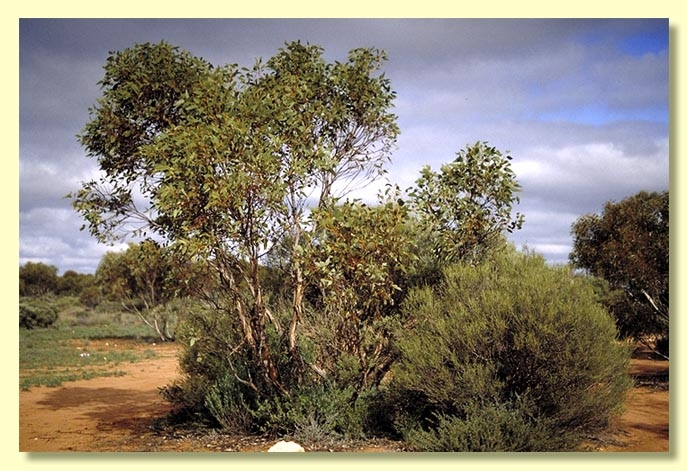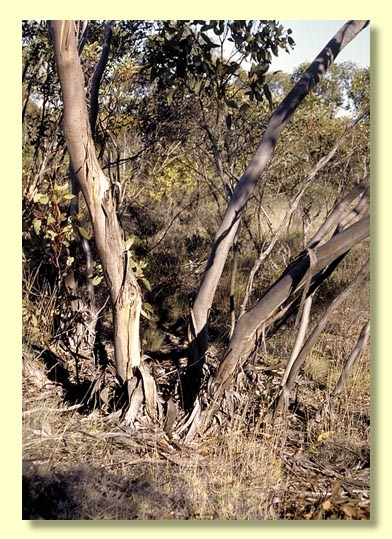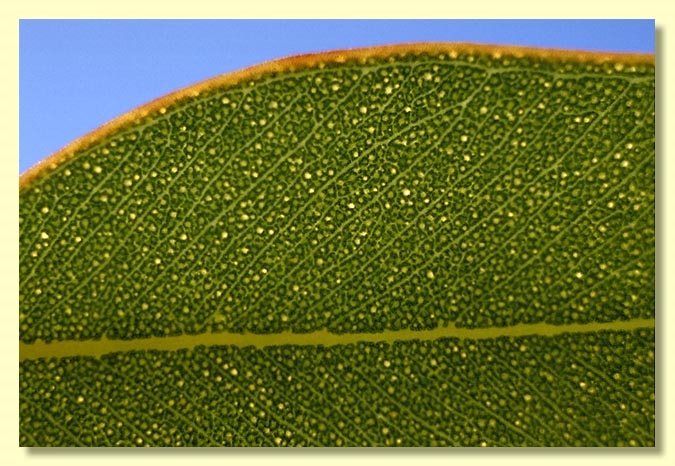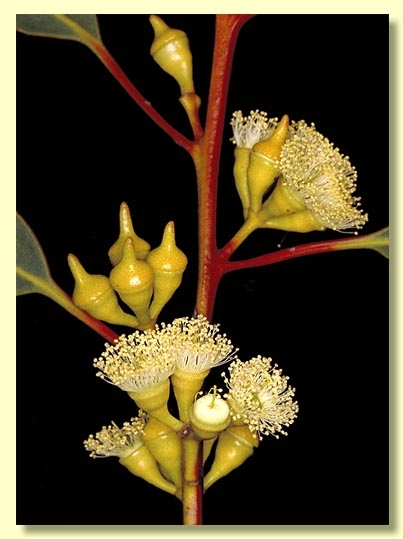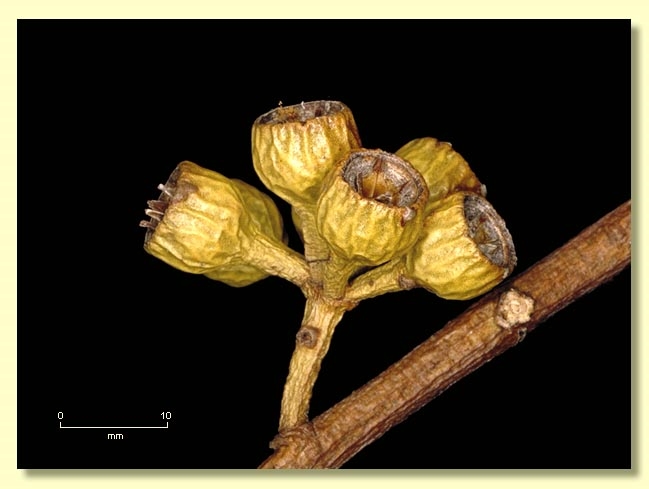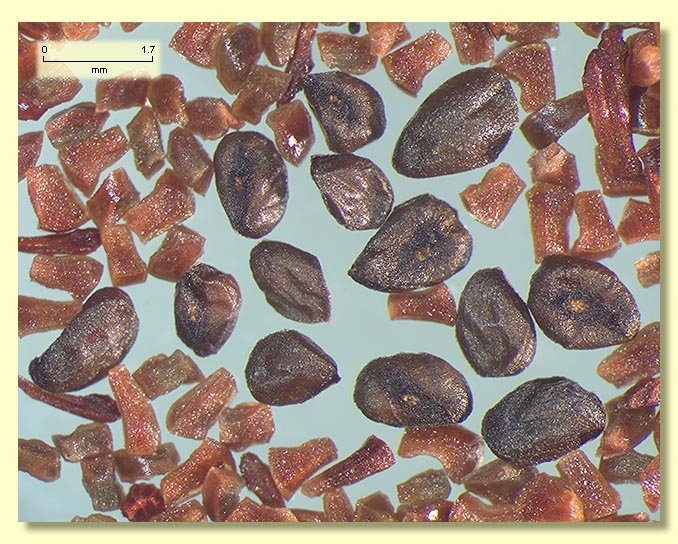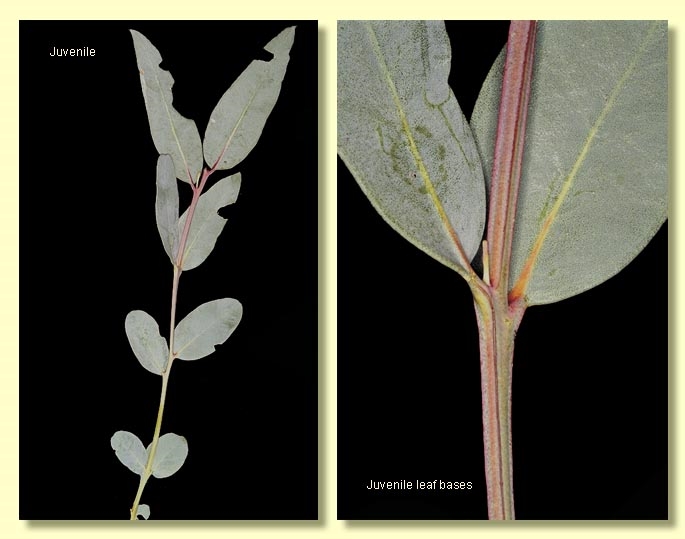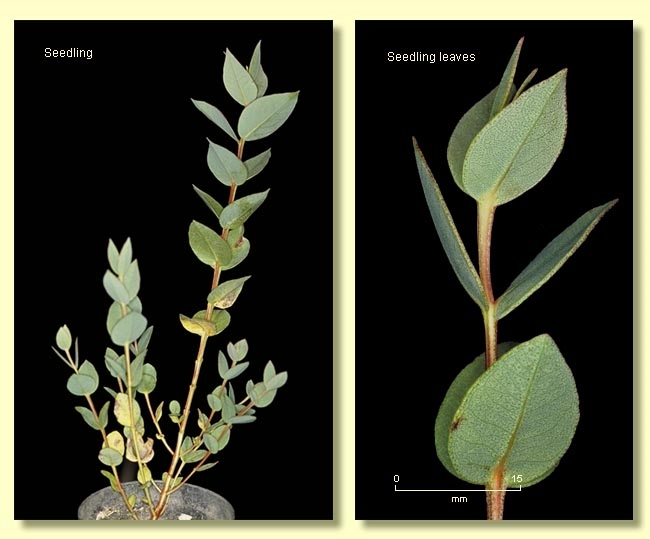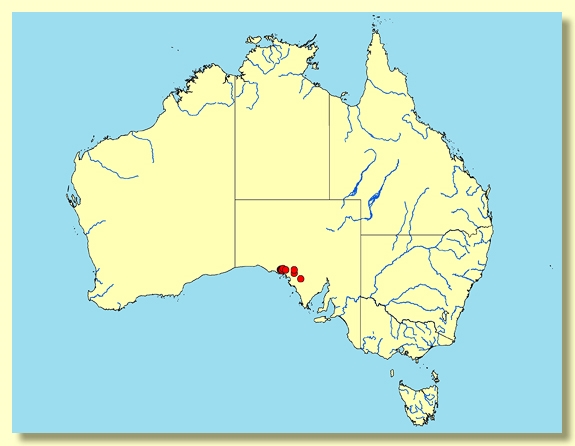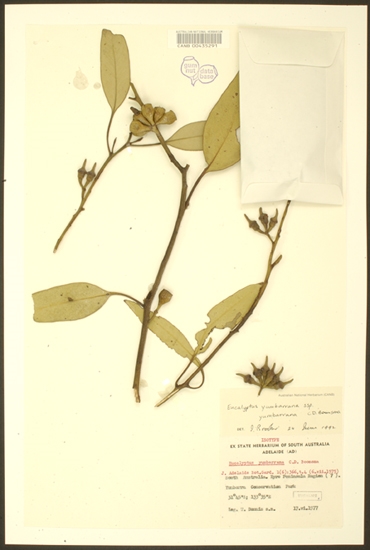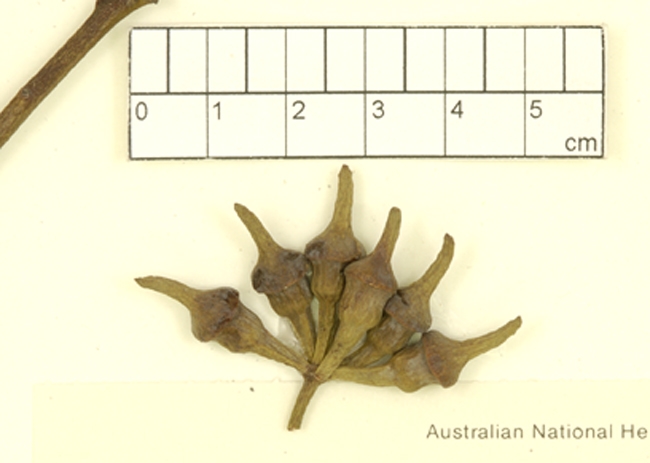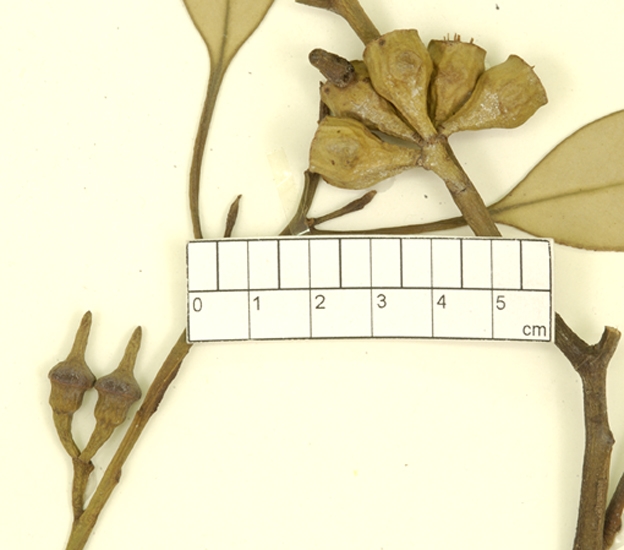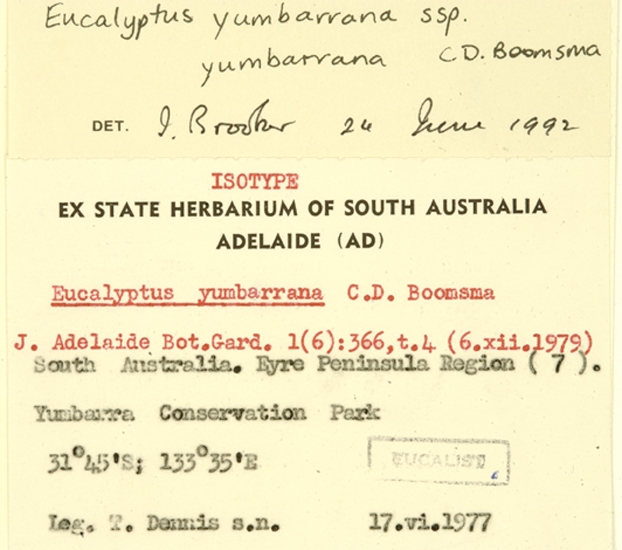Euclid - Online edition
Eucalyptus yumbarrana
Eucalyptus | Symphyomyrtus | Bisectae | Destitutae | Subulatae | Decussatae
Erect to sprawling mallee to 6 m tall, rarely a tree to 8 m. Forming a lignotuber.
Bark usually rough on the lower stem, loose flaky, ribbony, grey, sometimes ribbons held in the upper branches; upper stem smooth-barked, grey over pale orange-brown or grey over cream.
Juvenile growth (coppice or field seedlings to 50 cm): stems square in cross-section, rarely slightly winged, usually not glaucous, rarely glaucous; juvenile leaves opposite to alternate, sessile to shortly petiolate, elliptical to ovate to round to broadly lanceolate, 3.8–12 cm long, 2.5–5.5 cm wide, dull blue-green.
Adult leaves alternate, petioles 1.5–3 cm long; blade ovate to broadly lanceolate to lanceolate, 7–13 cm long, 2–5 cm wide, concolorous, glossy green when mature, side-veins at an acute or wider angle to midrib, moderately to densely reticulate, oil glands intersectional to island.
Inflorescence axillary unbranched, peduncles 0.7–2 cm long, buds usually 7-flowered, rarely more than 7 flowered, buds pedicellate, pedicels 0.4–0.7 cm long. Mature buds ovoid (1.2–2 cm long, 0.7–0.9 cm wide), not glaucous, scar present, operculum beaked (0.8–1.3 cm long), slightly wider than hypanthium at the join, stamens irregularly flexed to inflexed, anthers versatile, globoid, dehiscing by lateral pores, style long, stigma tapered, locules 3 or 4, the placentae each with 4 vertical ovule rows. Flowers creamy white to yellow.
Fruit pedicellate, pedicels 0.2–0.9 cm long, truncate-globose to cup-shaped, rarely barrel-shaped to urceolate, 0.8–1.2 cm long, 0.8–1 cm wide, disc descending obliquely, valves 3 or 4, valve tips strongly exserted due to fragile style remnants.
Seeds brown to grey, 1.8–2.5 mm long, ovoid or flattened-ovoid, occasionally with shallow longitudinal furrows on otherwise smooth dorsal surface, hilum ventral.
Cultivated seedlings (measured at node 10): cotyledons Y-shaped (bisected); stems square in cross-section, usually not glaucous, sometimes slightly glaucous on new growth; leaves opposite, sessile, cordate to ovate, 2–4.5 cm long, 1.2–2.5 cm wide, dull grey-green, sometimes slightly glaucous on new leaves, bases rounded to amplexicaul.
Flowering has been recorded in July, August and October.
A mallee or rarely small tree endemic to South Australia occurring on the desert fringes particularly north of Ceduna in the Koonibba and the Yumbarra area. It occurs on dunes rather than swales. The stems or trunks have loose, flaky rough bark, the adult leaves are thick, large and glossy green and buds are relatively large with the operculum wider than the hypanthium at the join.
Eucalyptus yumbarrana belongs in Eucalyptus subgenus Symphyomyrtus section Bisectae subsection Destitutae because buds have two opercula, cotyledons are Y-shaped and branchlets lack oil glands in the pith. Within this subsection E. yumbarrana is part of the large taxonomic series Subulatae further characterised by globoid basifixed anthers, grey smooth seeds with shallow longitudinal furrows, and fruit with persistent exserted style remnants. Series Subulatae is divided principally into four subseries based on the juvenile leaves, one with spiral, crowded seedling phyllotaxis (subseries Spirales), another with decussate and decurrent seedling leaves (series Decurrentes), another with decussate non-decurrent seedling leaves (subseries Decussatae), and a fourth with disjunct, petiolate seedling leaves (subseries Oleaginae).
Eucalyptus yumbarrana belongs in subseries Decussatae and is closely related to the widespread and variable E. socialis. It differs from E. socialis subsp. socialis in having thicker, glossy adult leaves (dull in subsp. socialis), buds with the operculum slightly wider than the hypanthium at the join and slightly larger fruit (fruit only 0.4-0.8 cm wide in subsp. socialis). The glossy, thicker adult leaves also distinguish E. yumbarrana from E. socialis subsp. victoriensis but both have similar sized and shaped buds and fruit of similar width. E. socialis subsp. victoriensis is more extensively distributed occurring on the southern fringes of the Great Victoria Desert from Forrest Lakes in Western Australia near the border with South Australia to the south-east to the Gawler Ranges and north-western Eyre Peninsula. E. socialis subsp. victoriensis differs further from E. yumbarrana in having buds in clusters of (7)9 or 11 (usually 7s in E. yumbarrana). Also buds may be glaucous in E. socialis subsp. victoriensis but are rarely weakly glaucous in E. yumbarrana.
E. yumbarrana subsp. striata Boomsma, J. Adelaide Bot. Gard. 2: 298 (1980), is regarded as a hybrid between E. vokesensis and E. canescens – fide D. Nicolle & L.A.S. Johnson, Telopea 8: 195 (1999).

